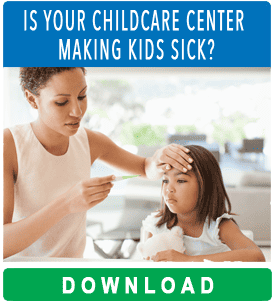Schools and day cares are an easy place to pick up new germs. When many children gather all in one area, this becomes an open invitation for germs such as the common cold, pink eye, and stomach bugs to get passed around again and again. Back-to-school season can be particularly rough, especially for younger children attending preschool or kindergarten. Their immune systems are not conditioned to handle the sudden and significant exchange of germs, and they can quickly become overloaded. There are, however, a few things you can do to help with the transition during this season.
Know the Illness Policy of Your School or Daycare
Illness policies can differ slightly between schools and other organizations. Be sure to read through the handbook or the paperwork coming home with your child. Some policies are very specific, while others outline only the basics. Caregivers and teachers do not appreciate sick children in their classroom, and may get upset if a child comes to school with symptoms.
Have a Plan in Place for Sick Days
Sick days always seem to pop up unexpectedly. To prepare, be sure you have a plan in place for a sick child. Whether it means taking the day off from work or calling grandma as a backup, you will need to have someone at home to care for your child. It is best to have a secondary friend or family member who lives in town on your emergency contact information. If, for some reason, you are unreachable, they are next in line to receive the phone call and pick your sick child up from school.
Prevention Is the Key
When dealing with large numbers of children in a daycare or school environment, the best way to avoid illness is through proper prevention. Teach proper hand-washing techniques to help ward off any germs floating around the classroom. Ensure kids wash their hands before eating lunch or touching their face and eyes. Children should also cough into their elbow to contain any germs.
Signs That a Child Should Stay Home
As the parent, often you will know if something isn’t right with your child before the onset of any symptoms. They might seem off in behavior, or your intuition will tell you something is wrong. There are physical symptoms to monitor, as well, which would be cause for your child remaining home from school. Here is a list of the symptoms to keep an eye out for:
- Fever over 100 degrees. This number varies slightly from program to program, so be sure to check your handbook for your guidelines.
- Uncontrollable coughing, wheezing, or other signs of difficulty breathing.
- Changes in behavior such as lethargy or persistent crying.
- A respiratory illness such as bronchitis or pneumonia.
- Throwing up. Typically, a policy will say a child must not have thrown up for 24 hours before returning to school.
- Diarrhea
- A rash, especially when accompanied with other symptoms.
- Mouth sores.
- Pink eye.
If your child is experiencing any of these symptoms, it is best to keep them home to rest. This will also avoid the spread of germs to anyone else in the classroom. While it may be inconvenient, your child’s teacher will thank you for keeping the germs to yourself. Before sending your child back to school, discuss good hand-washing techniques and opportunities throughout the day to head to the sink.
Additional Resources:
https://www.careforkids.com.au/child-care-articles/article/71/keeping-your-child-healthy-in-child-care
https://share.upmc.com/2018/08/4-common-back-to-school-illnesses-and-health-conditions/
https://www.health.com/health/gallery/0,,20725771,00.html




